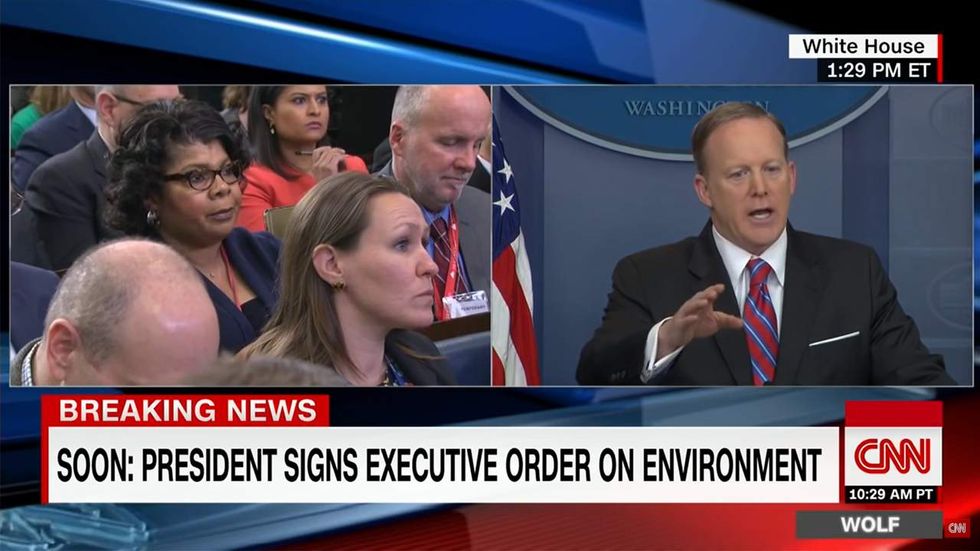
Sean Spicer at March 28, 2017, press conference. (Image source: YouTube)

You can’t make this stuff up.
At a press conference on Tuesday, Trump administration press secretary Sean Spicer said to the media in response to questions about President Donald Trump’s potential ties to Russia, “I’ve said it from the day that I got here until whatever that there is no connection. You got Russia. If the president puts Russian salad dressing on his salad tonight, somehow that’s a Russian connection.”
Spicer: If #Trump puts Russian dressing on a salad, media sees 'Russian Connection' https://t.co/dkOlunRSPm pic.twitter.com/ppLDNCTFMk
— FOX Business (@FoxBusiness) March 29, 2017
Clearly, CNN wasn’t amused by Spicer’s joke; it issued a report discussing the flaws of Spicer’s claim, pointing out, “Russian dressing isn’t Russian.”
“Thing is, Russian dressing isn’t Russian,” wrote Michelle Krupa, who then went on to explain Russian dressing originated in Nashua, New Hampshire.
“It was grocer James E. Colburn who invented the spread in 1924, according to ‘New Hampshire Resources, Attractions and Its People, a History,’ by Hobart Pillsbury,” Krupa wrote. “The Washington Post cites the 1927 text, which says Colburn sold the condiment to ‘retailers and hotels across the country, earning ‘wealth on which he was enabled to retire.’”
“So what’s with the Russian connection?” Krupa wrote. “Some say it’s because Colburn liked to mix in caviar, or perhaps because it sometimes was added to the Russian-inspired Salad Olivier.”
Krupa’s story, which is titled “Russian dressing is actually from Nashua, New Hampshire,” was clearly also meant to be a joke (I hope), but isn’t CNN supposed to be a serious news agency reporting on serious news stories?
CNN, along with MSNBC, has experienced significant ratings boosts in recent months, compared to ratings compiled one year ago. But that appears to be a part of a larger trend that shows cable news ratings have been increasing across the board.
Compared to its competition, CNN's popularity has been falling rapidly. It now lags behind MSNBC in primetime. MSNBC’s primetime viewership in the first quarter of 2017 rose by 58 percent compared to 2016, while CNN’s ratings fell by 17 percent. MSNBC recorded an average of 1.4 million viewers in primetime in the first quarter, compared to CNN’s 1.17 million.
Neither CNN nor MSNBC could come remotely close to matching Fox News’ ratings. Fox News averaged 2.86 million viewers in primetime in the first quarter, and nine of the top 10 cable news shows were produced by Fox News over the same period.
Justin Haskins